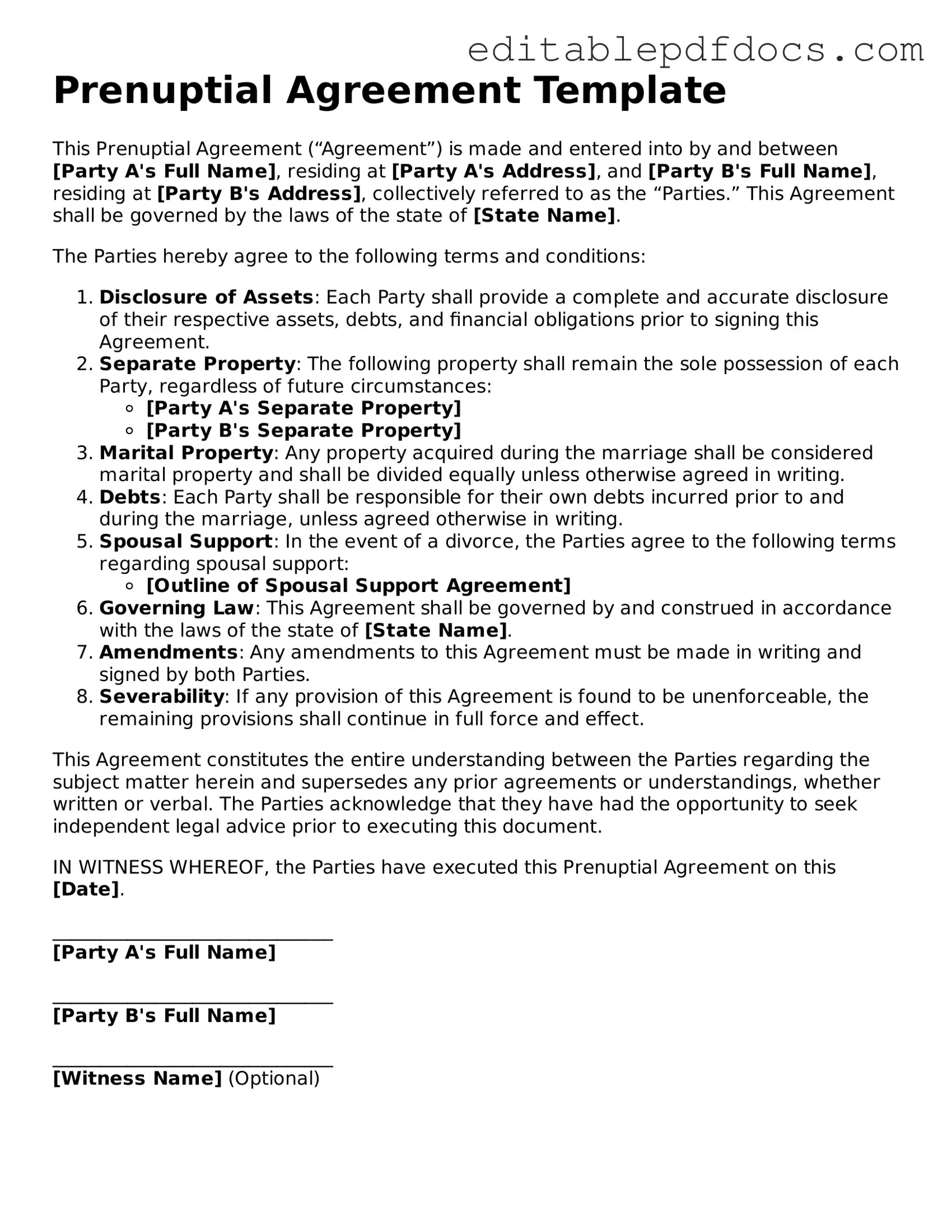A prenuptial agreement, commonly known as a prenup, serves as a vital tool for couples considering marriage. This legal document outlines the financial and property rights of each spouse in the event of a divorce or separation. By clearly defining how assets will be divided and addressing issues such as spousal support, a prenup can help prevent misunderstandings and disputes in the future. Couples can specify which assets are considered separate property and which will be shared, thus safeguarding individual interests. Additionally, a prenup can include provisions for debt management, inheritance rights, and even stipulations for alimony. As a proactive measure, this agreement fosters open communication about finances and can strengthen the relationship by ensuring that both parties have a mutual understanding of their financial landscape. Ultimately, a well-drafted prenuptial agreement can provide peace of mind and clarity, allowing couples to focus on their future together without the worry of potential financial conflicts.
